This time of year at Trout Unlimited, those of us that work on stream restoration and reconnection projects for fish in the West are looking forward to the field season ahead. This year, is of course, a little different.
With a global pandemic underway, and much more time stuck at the computer desk than I’m used to, the lure of the field season and the chance to get outside and work on conservation projects is stronger than ever. One project that will be especially rewarding to visit this summer is the Tincup Creek Stream Restoration Project, a native fish-focused restoration effort on Caribou-Targhee National Forest lands. As of now, all systems are a go for us to wrap up our fourth and final year of construction on the project, thanks to the steadfast support of many partners and volunteers.
Partners and volunteers have been the heart of the project since its very start. When the Caribou-Targhee National Forest approached me to work on this project four years ago, it was a natural fit, thanks to the strong relationship that already existed between CTNF and TU from years of working together on stream restoration projects.
As we mapped out how the project would unfold, we knew it was going to take multiple phases to complete, since we would be restoring nearly five miles of stream and had at most eight weeks each summer to construct the stream treatments with the excavation contractor. But this paced approach has had several benefits. First, thanks to the cost-savings of the CTNF staff doing the project design and construction oversight “in house”, the project has proven to be remarkably cost-effective – less than a fifth of what a similar project might cost elsewhere. Second, it allowed us time to raise funds for each subsequent phase.
One of the remarkable things about the project is that many funders, like the National Forest Foundation, have “doubled down” and supported us for multiple phases. We were thrilled to receive National Forest Foundation funding through their Matching Awards Program for the second and third phases of the project, in 2018 and 2019, and believed it to be a particularly good fit because it addressed both the NFF’s Forest Health and Outdoor Experiences program areas, and also involved numerous partners.
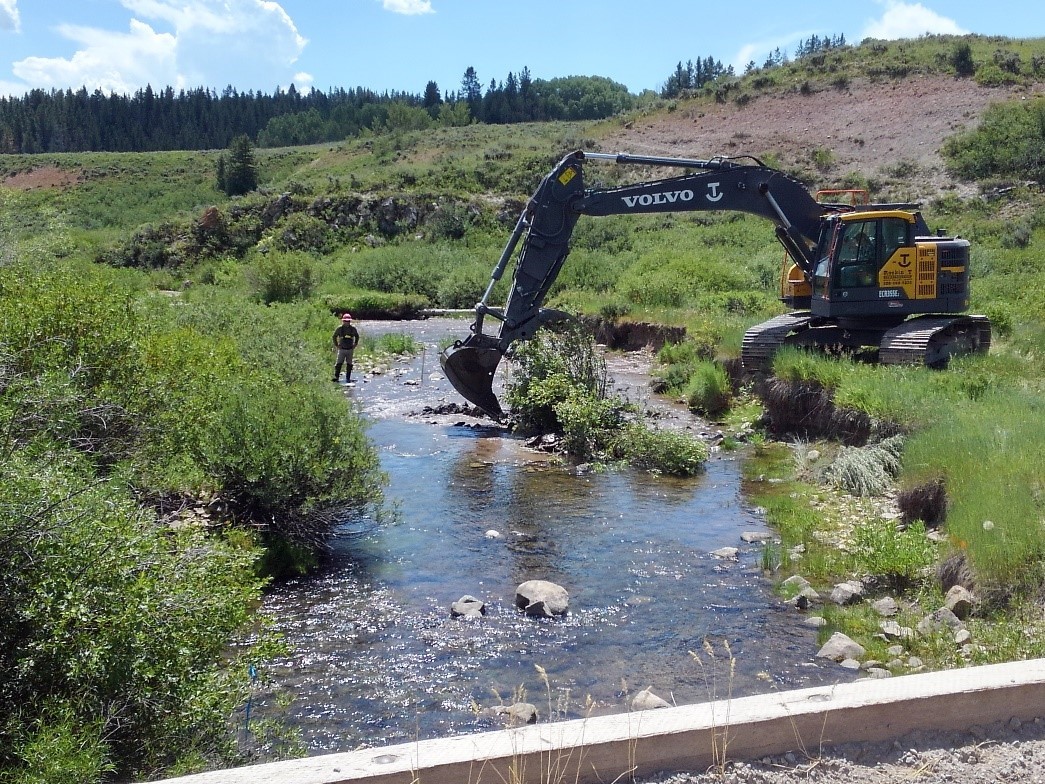
Before: July 2019. Stream is over-widened and downcut, with eroding banks
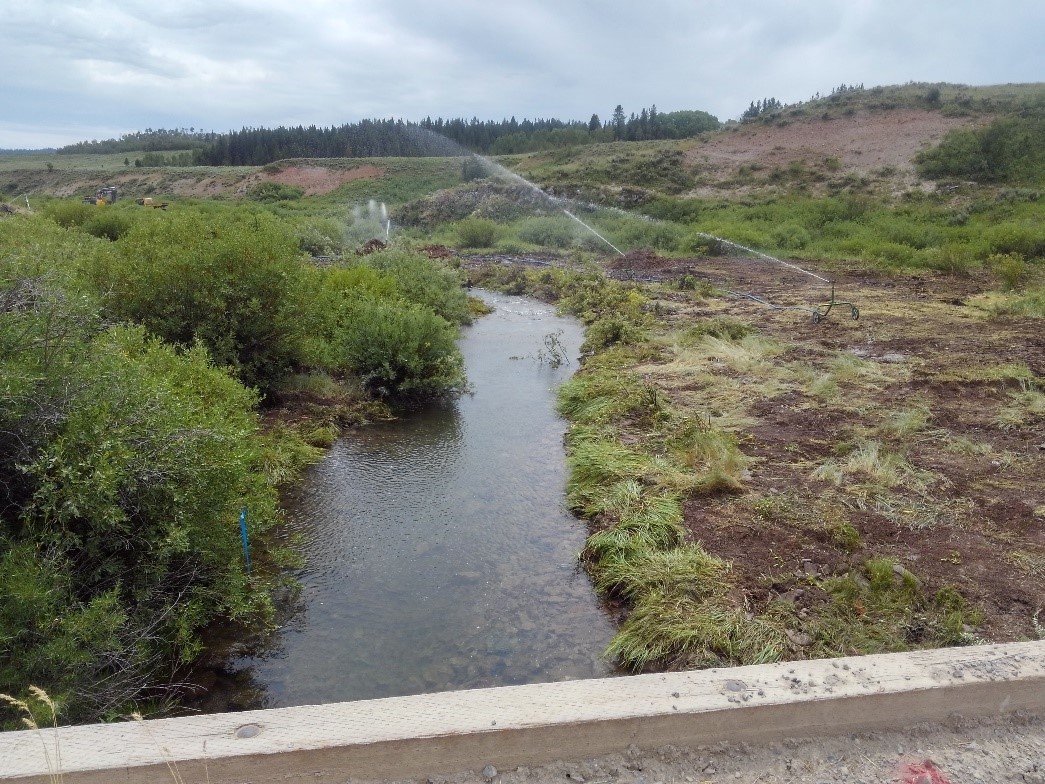
After: Channel has been narrowed and elevated, with improved floodplain connectivity, and sodmats added to the banks. Sprinklers are in place to help the vegetation establish.
An unintended and beneficial consequence of the project being located seemingly in the middle of nowhere is that volunteers from not one, not two, but THREE TU chapters have been involved in the fall volunteer day each year – from Star Valley TU (Afton and Alpine, WY), Jackson Hole TU (Jackson, WY), and Snake River Cutthroats TU (Idaho Falls, ID).
The closest volunteers travel about 45 minutes to the site, and the furthest over an hour and half, to help put the finishing touches on the restoration work after the excavation is done for the season. Together, they’ve spread loads of mulch and scattered native seed to boost revegetation efforts, planted willow cuttings by hand or with a water jet stinger, and built exclosure fencing for livestock.
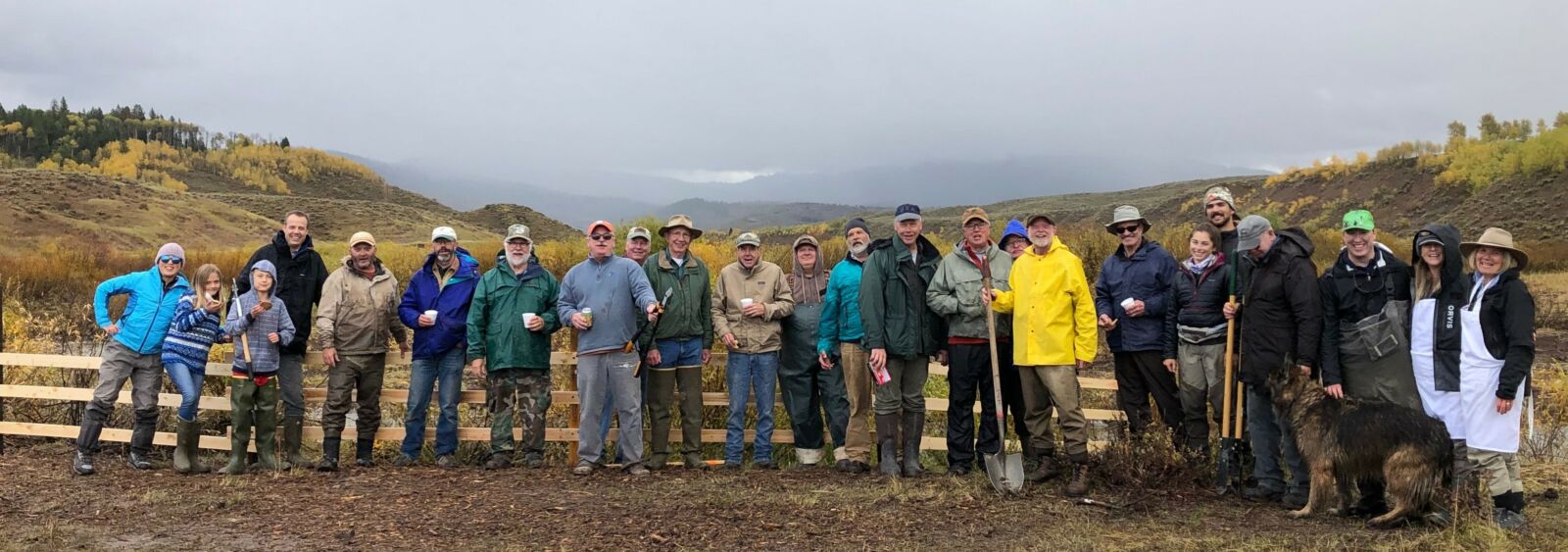
Volunteers from the Snake River Cutthroats (Idaho Falls), Star Valley, and Jackson Hole Trout helped to mulch, plant willows, and build exclusion fencing at our September 2019 volunteer day
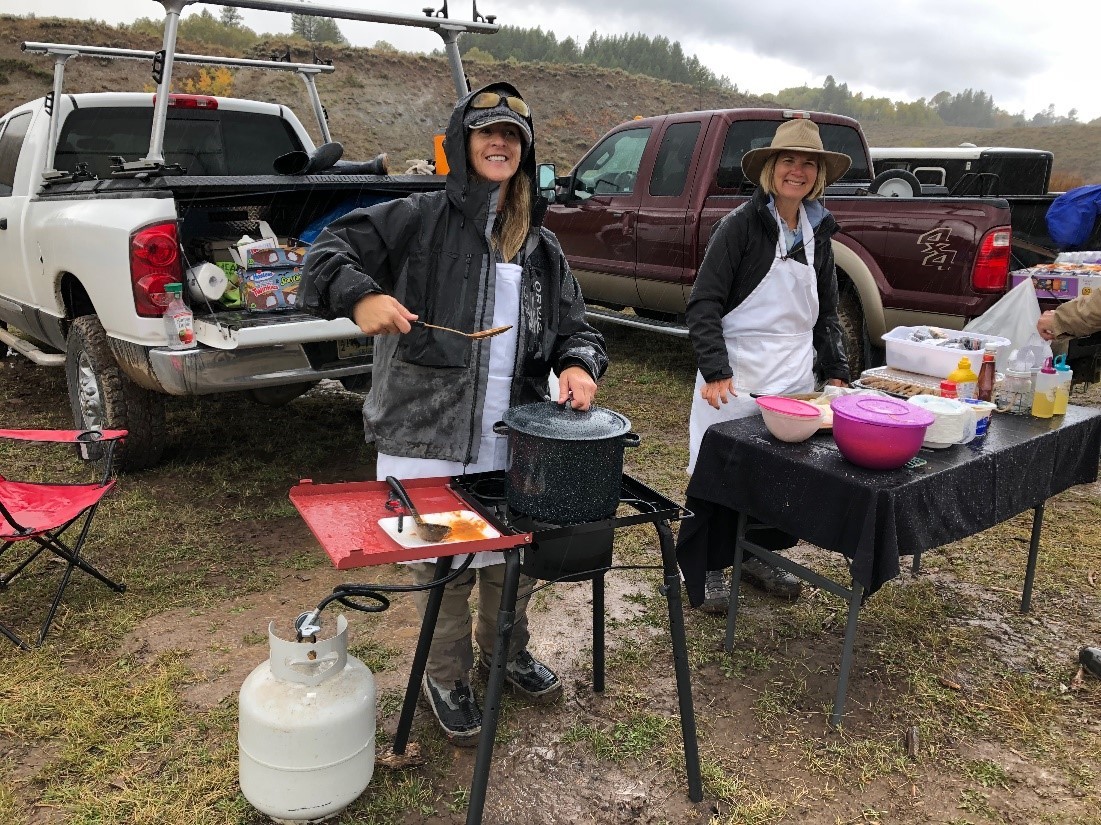
Star Valley TU chapter members hot lunch crew, September 2019 volunteer day
Matching Awards ProgramLast fall, I traveled to Ogden, UT to receive the US Forest Service Intermountain Region’s Partnerships and Volunteerism award on behalf of the project, alongside Lee Mabey, fisheries biologist from the Caribou-Targhee National Forest and grazing permittees Ken and Kip O’Brien of the OW Ranch. The Intermountain Region is a big area, encompassing parts of Idaho, Wyoming, Utah, and Nevada, so to have our project recognized out of the many other great conservation partnerships going on in these states was a special honor.
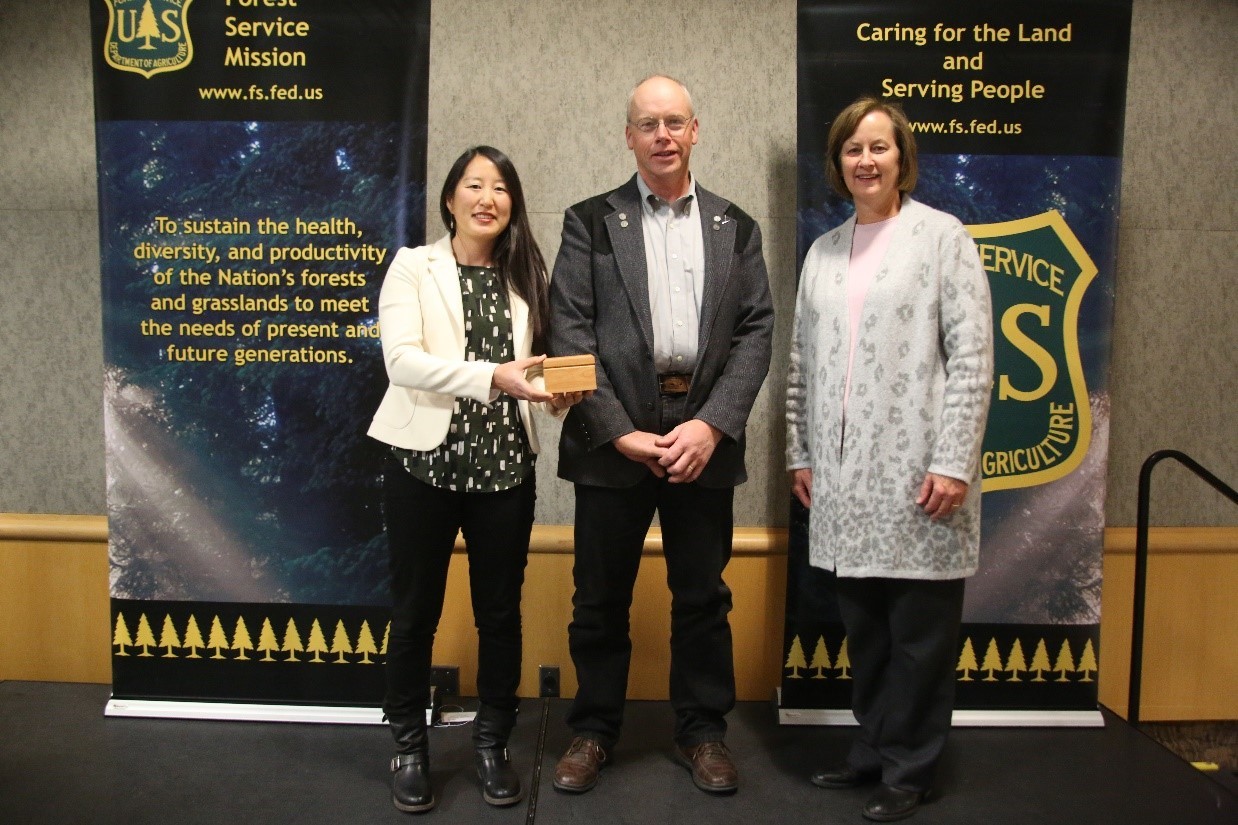
Leslie Steen (TU) and Lee Mabey (CTNF) accept USFS Intermountain Region Partnerships and Volunteerism award for the Tincup project from Nora Rasure, USFS Regional Forester.
I have no doubt that what made it rise to the top, is exactly what has made it such a special and rewarding project to be a part of – a coalition of partners and volunteers representing diverse interests, from ranching and mining to fisheries, forest health, and water quality, all pulling together in the same direction to “rebuild” and restore Tincup Creek on our National Forest lands.

